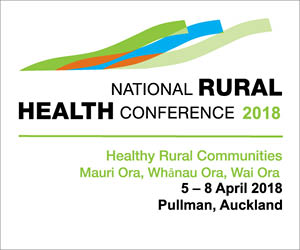Getting nursing staffing right is still a work in progress including the refining of nursing workforce models, believes new Nurse Executives chair Karyn Sangster.
Sangster, the chief nurse advisor for primary and integrated care at Counties Manukau District Health Board, this week steps in as the new chair of Nurse Executives of New Zealand.
She said having a primary health care nurse leader with a focus on integration being the new chair of NENZ was probably a sign of the times and as health care leaders NENZ were already looking across the healthcare spectrum and at the capability and capacity in all areas of health care.
Membership of NENZ included nurse leaders from across the spectrum of the health system including corrections, defence, aged residential care, primary health organisations, private hospitals and district health boards. “So it is a collaborative group of nursing leaders coming together.”
In the wake of ongoing concerns expressed by nurses on the floor about understaffing Nursing Review asked the new NENZ chair whether she believed there was enough nurses out there to do the work they are required to do?
“I think the answer is – that I don’t think we’ve got the right mix (of staffing) currently,” said Sangster. She was aware the Ministry of Health was looking at long-term data around nursing employment and the number of nurses the country needed to have in the training pipeline.
“I think we need to have really good workforce modelling to make sure we can identify how many nurses we need in the future,” said Sangster. “And I’m not sure that across any of the sectors we’ve got that modelling right.”
“I know that the Ministry of Health and Nursing Council are probably working to come up with, not an answer per se, but to understand the impact of population growth and the demand for care,” said Sangster. “And to look at whether we are training enough nurses and are we training enough in the right places.”
Sangster said NENZ’s role included being a voice for nurse leaders to bodies like the Nursing Council and Ministry of Health as well as providing an opportunity for networking and hearing keynote addresses that help update and refresh nursing leadership across the sectors.
NENZ’s broad membership also provided the chance for conversations and collaboration on how to work together to integrate health services between sectors.
Sangster said a key driver for integration was not only health policy but the drive to safer patient care through better coordination as transition between services.
“Every time you transfer patients between services there is a risk that information (important to continuity of care) is lost or slips through the gaps.”
“For me as a chair of NENZ I want us to have a really strong voice across all of the sectors,” said Sangster. She also wanted NENZ to support nursing capacity and to support nurses to strongly articulate what they do and what they need for the true integration of patient care. “As nurses we have a huge contribution to make to the health of New Zealanders.”
She said recent work completed by NENZ included an updating of the national framework for professional development and recognition programmes (PDRP) and working with the national nursing organisations on a document to support the employment of enrolled nurses across the sector.
Sangster said nothing had been presented to NENZ yet about the current NETS discussions on a common nurse graduate profile and the possibility of also looking at a national curriculum. “I’m sure that when it is more developed and there is some momentum behind it that it will be an agenda item that comes forward to us.”
Sangster takes over the chair from Counties Manukau director of nursing Denise Kivell.




















